Buckle up because I’m about to rock your gluten free world with my Gluten Free Egg Noodles recipe!
These tender, homemade, gluten free egg noodles are made with 3 everyday ingredients plus water, in 15 minutes, plus they freeze beautifully. No pasta machine nor pasta roller needed!
Soup season will never be the same, not to mention the fact that these make for the most delicious butter-parmesan noodles a la yesteryear.
Easy Gluten Free Egg Noodles
Here in the heart of the Midwest, there’s a company that makes the most delicious, thick and chewy frozen egg noodles to add to dishes like Chicken & Dumplings, or toss into soups as a hearty swap for regular noodles. I grew up eating them and they were a convenience food I missed dearly after having to go gluten free since they’re wheat-based.
My recipe for gluten free noodles is the perfect swap. I can’t tell you how thrilled I was after my first bite, plus making your own homemade gluten free pasta is so rewarding!
Ingredients Needed
Store-bought gluten free pasta has come a long way and there’s even fresh gluten free egg noodles available at my grocery store these days. That said they are extremely expensive. Making gluten free egg noodles at home is not only easy, but economical too. Here’s what you’ll need:
- Gluten free flour blend. You’ll need a gluten free flour blend WITH a binder such as xanthan gum, vs a single flour or starch like almond flour, white rice flour, tapioca starch, potato starch, or corn starch. I like Bob’s Red Mill Gluten Free 1-to-1 Flour, and have also made these noodles many times with Domata GF Flour.
- Eggs. Can’t have egg noodles without eggs! You’ll need 3 large eggs, plus an extra egg yolk. The eggs do not need to be room temperature before making the pasta. An egg substitute will not work for this recipe.
- Salt. To flavor the pasta.
- Water. To bring the ingredients into a dough.
That’s it!
How to Serve Gluten Free Egg Noodles
Onto the fun part. You can incorporate cooked gluten free egg noodles into nearly any pasta dish because they can be sliced as thin or as wide as you like.
I slice them into thicker, shorter strips for dishes like Beef and Noodles and Homestyle Chicken and Noodles. For recipes like Gluten Free Homemade Chicken Noodle Soup, I slice them thinner like the photos you see here.
Here are some more ideas for how to serve cooked gluten-free noodles:
- Toss with butter, parmesan cheese, and salt (<< personal fave!)
- Serve with marinara, meat sauce, or pomodoro sauce.
- Use in Creamy Mushroom Parmesan Pasta.
- Serve under Beef Stroganoff.
- Toss with this 2 ingredient sauce.
- Use in Tuna Noodle Casserole.
- Swap for the gnocchi in One Pot Gnocchi Chicken Pot Pie.
Truly the possibilities are endless.
Tips for Perfect Gluten Free Egg Noodles
- No substitutions. Because there are so few ingredients in this recipe, I don’t recommend substituting any of them. A liquid egg substitute for example cannot be used in place of chicken eggs.
- Flour, flour, flour! Don’t be afraid to keep adding more gluten free flour to your work surface, and/or on top of the dough as needed to prevent it from sticking to the rolling pin or countertop.
- Rotate while rolling. I like to rotate the dough sheet 1/4 turn after every couple of rolls with a rolling pin to ensure it’s not sticking to the countertop.
- Roll thin. While you can slice your noodles as thin or as wide as you like, it’s best to roll the gluten free pasta dough out as thin as possible to achieve the best texture of cooked noodles.
- Don’t overcook. Depending on the width, homemade gluten-free egg noodles will take between 8-12 minutes to cook to al dente. Very similar to dry pasta. Don’t overcook the noodles or they can fall apart.
- Channel your inner im-perfectionist. This homemade pasta is supposed to be rustic and homestyle — have fun with it and don’t stress if your noodles aren’t perfect looking. They’re going to taste great!
Ok, ready to get your hands dirty? Grab an apron and let’s do this!
How to Make Fresh Gluten Free Egg Noodles
Step #1: Whisk the eggs.
Add whole eggs plus an extra egg yolk to a bowl with salt and water then whisk until combined.
Step #2: Prepare the gluten free flour.
Add the gluten-free flour blend to a large bowl then use the back of a spoon to create a well in the center. Pour the egg mixture into the well.
Step #3: Form the pasta dough.
Use a fork to gradually incorporate the edges of the flour into the egg mixture. Once all the flour is wet, use your hands to press and knead the dough together inside the bowl.
Pour the flour mixture out onto a heavily floured, clean, flat working surface. It’s ok if the dough is a bit crumbly.
Step #4: Knead the pasta dough.
Knead the dough into a smooth ball, adding additional flour if necessary. Slice the dough ball in half (or into quarters if your work surface is smaller) then wrap the other half with a damp paper towel to avoid drying out.
Step #5: Roll out the pasta dough.
Press the dough out onto the work surface using your fingertips then switch to a rolling pin and roll the dough into a very thin sheet, rotating a quarter turn as necessary to prevent sticking, and adding more gluten free flour as needed to prevent sticking.
Step 6: Slice the pasta dough.
Use a sharp knife or pizza cutter to slice the dough into your desired noodle shape. Again, if I’m adding the noodles to a thickened stew I’ll slice them into 2-1/2 x 1/2″ strips. If I’m adding them to a soup, I’ll slice them into 3 x 1/4″ strips.
Use a bench scraper or a large metal spatula to scrape the gluten-free pasta off the countertop, then gently toss the noodles with any remaining flour to ensure they won’t stick together.
Voila — you’ve just made homemade gluten free egg noodles!
How to Use, Store, and Freeze
- To cook fresh: Add the fresh gluten free noodles to boiling broth (like soup) or water then turn the heat down to medium and simmer until al dente, 8-12 minutes depending on the width of the noodle. Drain if cooking in water then use however you like.
- To store: Transfer the egg noodles to an airtight container then refrigerate for up to 3 days.
- To freeze: Transfer egg noodles to a Ziplock freezer bag then arrange them in somewhat of a flat layer (vs in a clump), remove the air, and seal. Freeze for up to 3 months. Noodles can be cooked from frozen — no need to thaw first.
Note: I don’t recommend freezing these noodles after cooking. Freeze them prior to cooking.
Gluten Free Egg Noodles FAQ
Are any egg noodles gluten free?
Traditional egg noodles are made with wheat flour and are not gluten free.
Can I use a liquid egg product instead of regular eggs?
No, you need to use whole chicken eggs + one extra egg yolk, vs a liquid egg product.
Can I dry these egg noodles?
These noodles are intended to be cooked fresh or from frozen. They will become brittle and break if you attempt to dry them.
Do I need to thaw the frozen noodles before cooking?
Nope! You can add the frozen egg noodles directly into a soup/stew, or boiling water straight from the freezer.
free email bonus
Dinner Made EASY
5 days of simple yet flavorful recipes that take the stress out of dinnertime!
Gluten Free Egg Noodles
Description
Gluten Free Egg Noodles are made in minutes with 3 everyday ingredients. Add to homemade soups and stews, or serve with butter and salt. They freeze well, too!
Ingredients
- 3 large eggs plus 1 additional egg yolk
- 1 teaspoon salt
- 1 - 2 Tablespoons water
- 2 cups gluten free flour, plus more for rolling
Directions
- Heavily flour a clean, flat work surface with gluten free flour.
- Add eggs, extra egg yolk, salt, and 1 Tablespoon water to a small mixing bowl then whisk to combine.
- Add 2 cups gluten free flour to a large mixing bowl then use the back of a spoon to create a well in the center. Pour the egg mixture into the well then, using a fork, whisk around the edges of the flour to gradually incorporate it into the egg mixture.
- Once all the flour is wet, use your hands to press and knead the dough in the bowl to bring it mostly together — it’s ok if the dough is a bit crumbly. Pour the dough out onto the floured surface then continue to press/knead until it comes together into a smooth ball. There will be some dry crumbles that won’t want to be worked into the dough — brush them off to the side and discard. If the dough is so crumbly that it won’t come together into a ball, work an additional Tablespoon water (or more if needed) into the dough.
- Cut the dough ball in half, or into quarters if your work surface is small, then cover half with a damp paper towel to prevent it from drying out. Add additional gluten free flour to the work surface if needed then use your fingertips to press the dough out slightly. Switch to a rolling pin then roll each half very thin, adding more flour as needed and rotating the dough sheet 1/4 turn occasionally to avoid sticking.
- Using a knife or pizza cutter, slice the dough sheet into your desired size of noodles. I usually cut 2-1/2 x 1/2” strips when adding the noodles to a thickened stew, or 3 x 1/4” noodles if adding to a soup, for example.
- Use a bench scraper or a large metal spatula to scrape the noodles up off the work surface then gently toss with the remaining flour on the work surface to avoid sticking. Place noodles in an airtight container then repeat with remaining dough.
- To cook noodles: sprinkle into boiling broth (like soup) or water then turn heat down and simmer for 8-12 minutes, depending on how thick the noodles have been rolled out and/or how large they’ve been cut, or until al dente, stirring occasionally.
- To store noodles: transfer to an airtight container then refrigerate for up to 3 days.
- To freeze noodles: transfer to a Ziplock freezer bag then arrange them in somewhat of a flat layer (vs in a clump), remove the air, and seal. Freeze for up to 3 months. Noodles can be cooked from frozen — no need to thaw first.
Notes
- I recommend Bob's Red Mill Gluten Free 1-to-1 Baking Flour for these Noodles. I have also made them many times with Domata Gluten Free Flour.
This recipe is courtesy of Iowa Girl Eats, http://iowagirleats.com.
Photos by Ashley McLaughlin
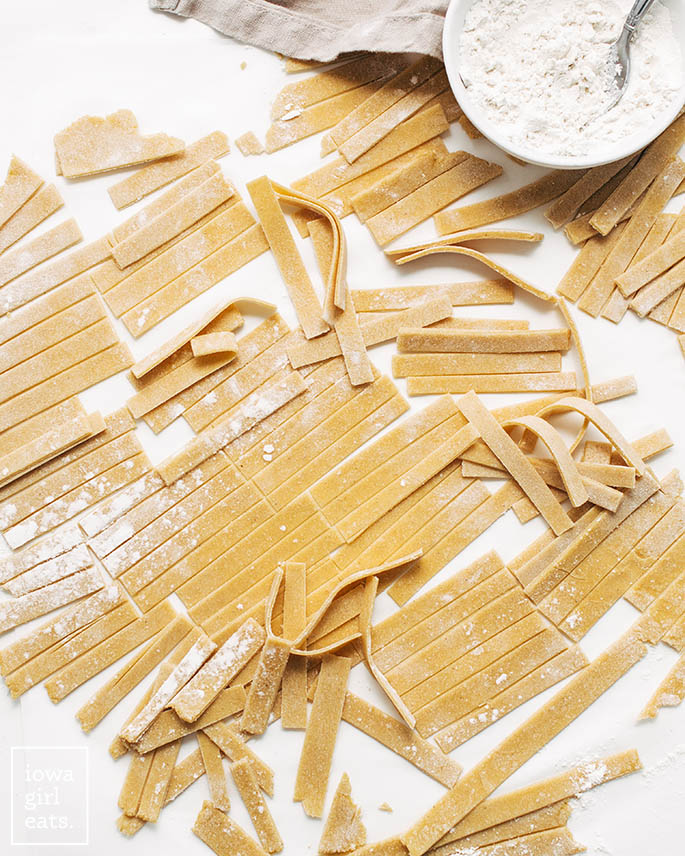
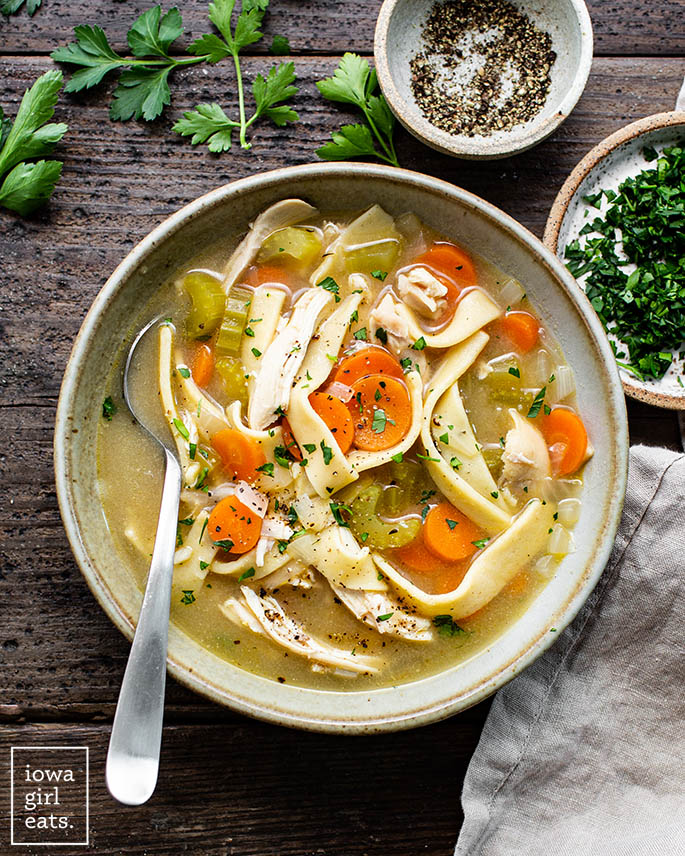
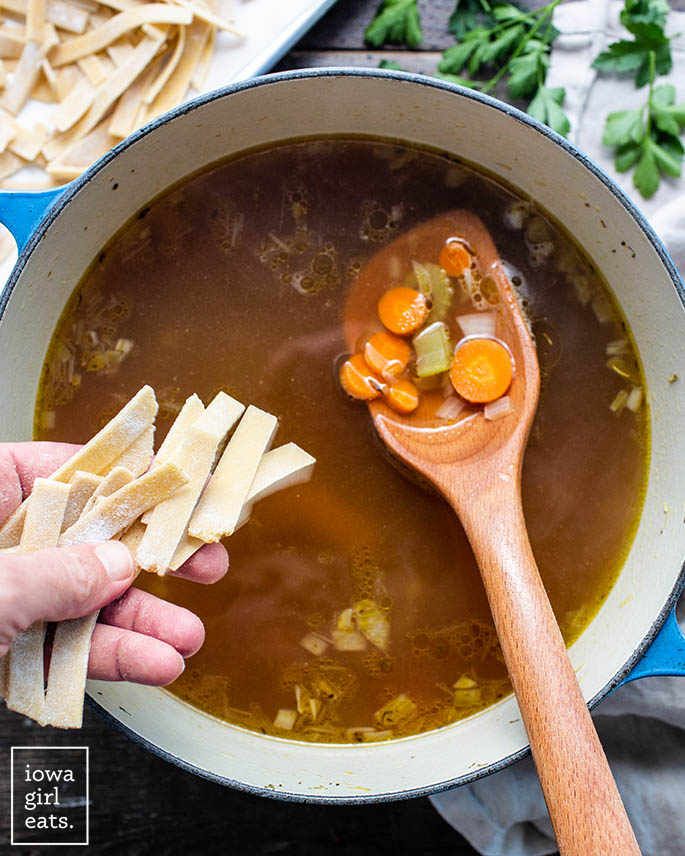
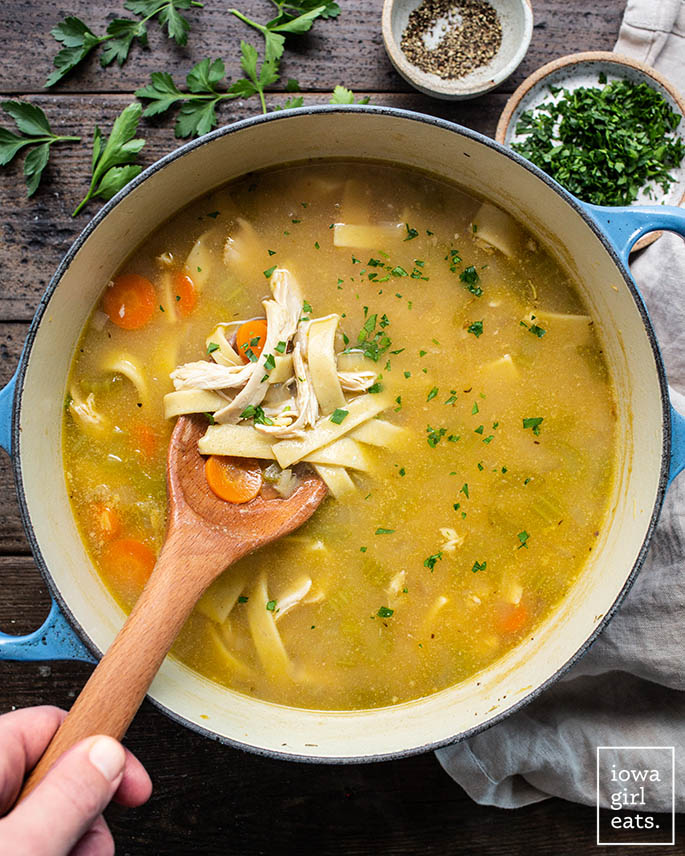
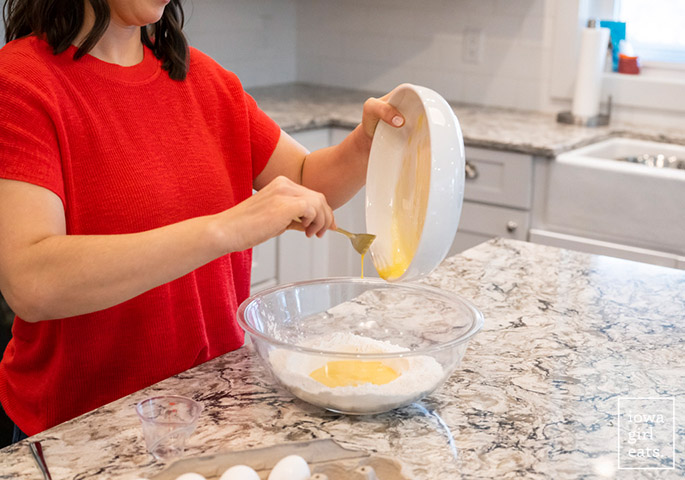
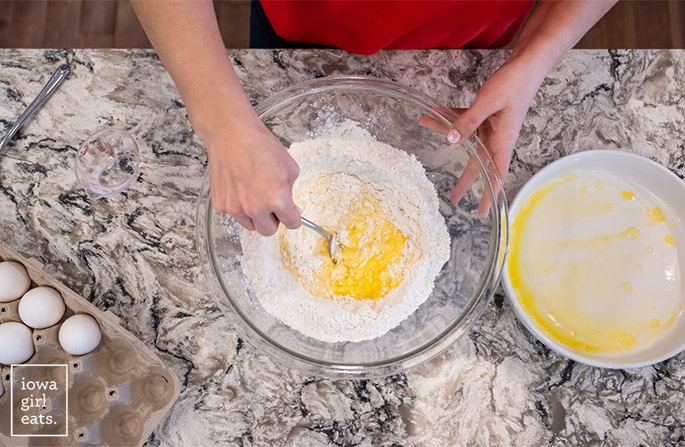

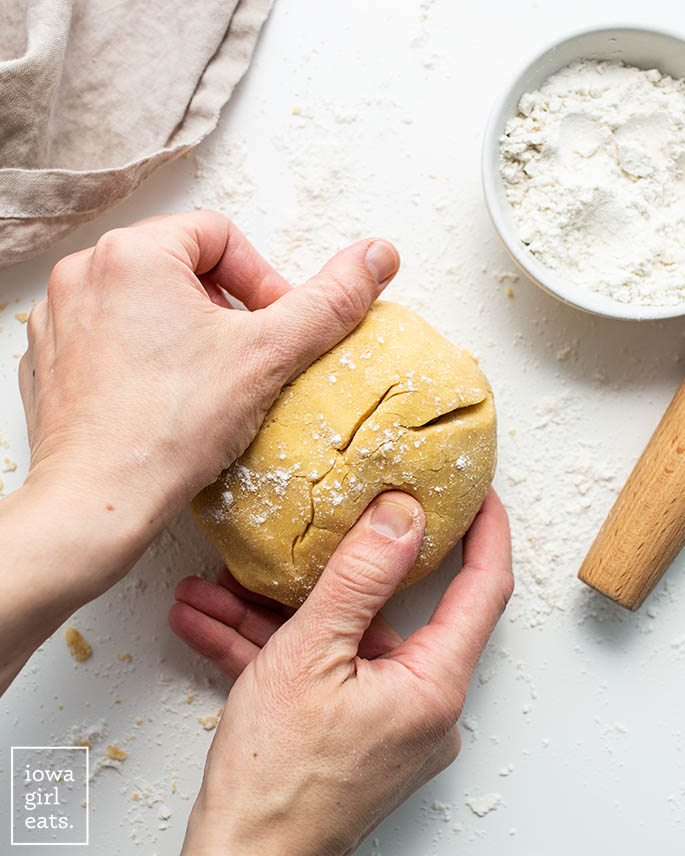
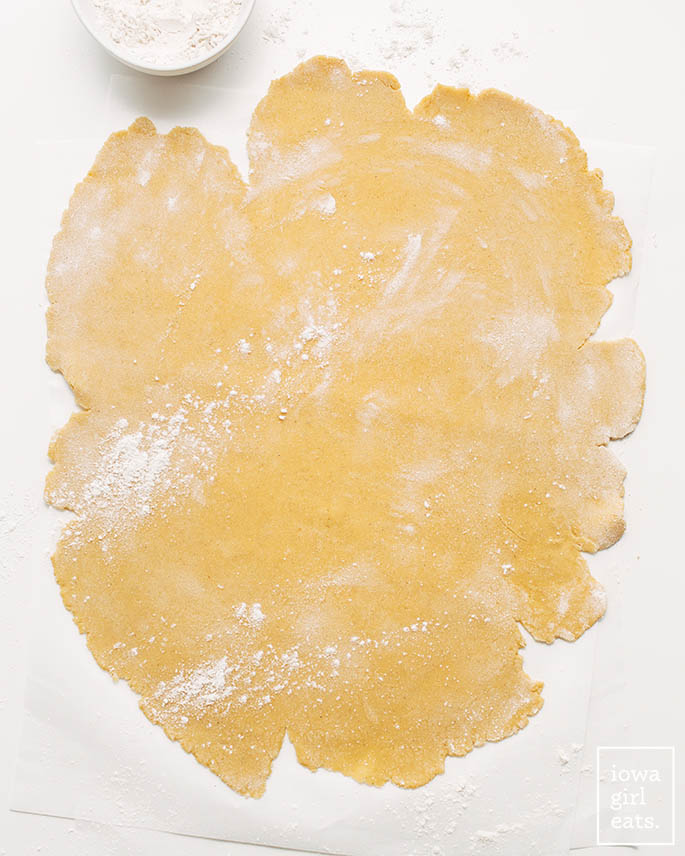
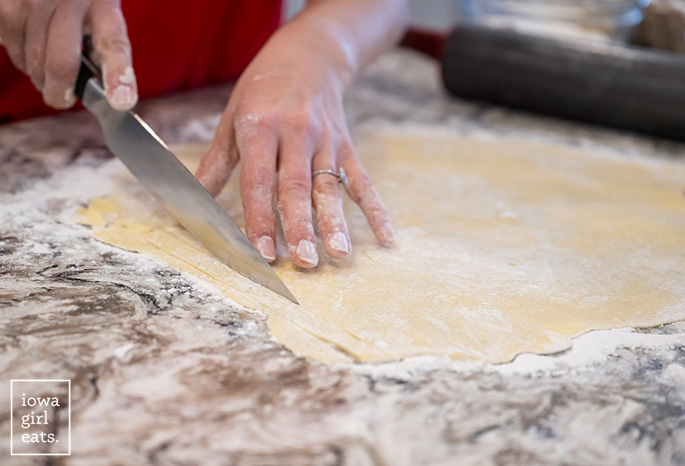
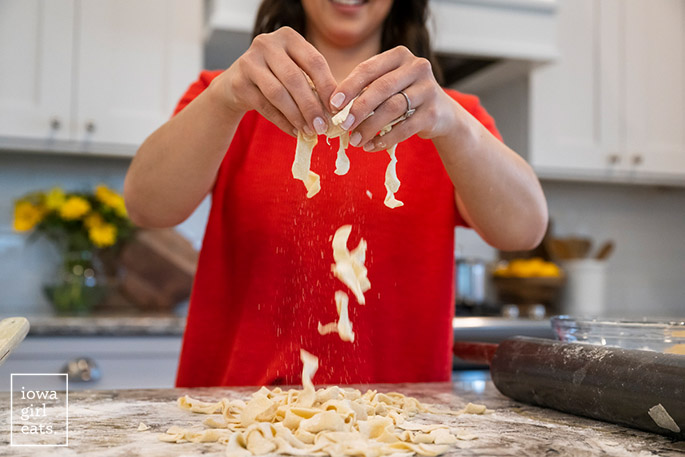
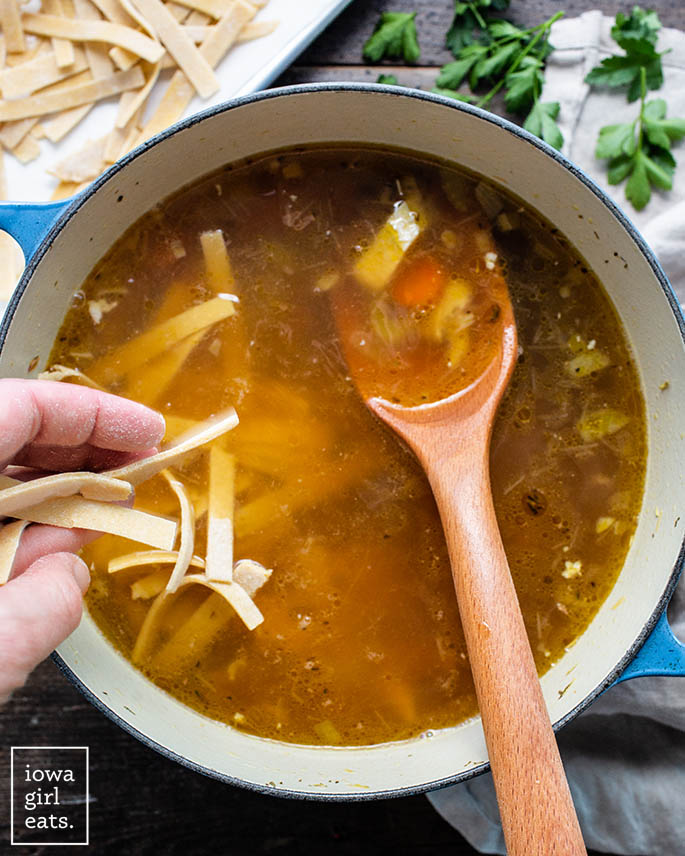
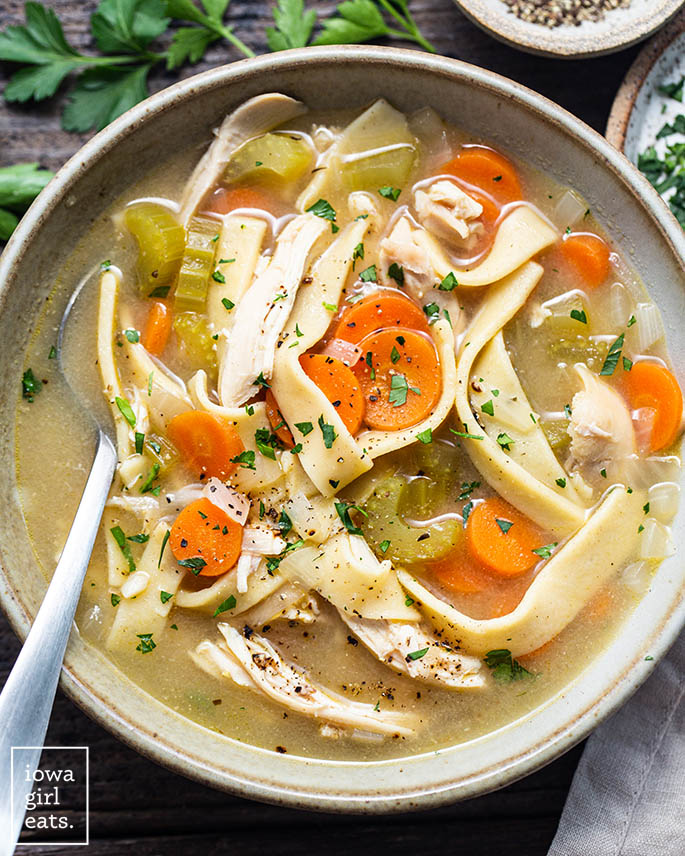

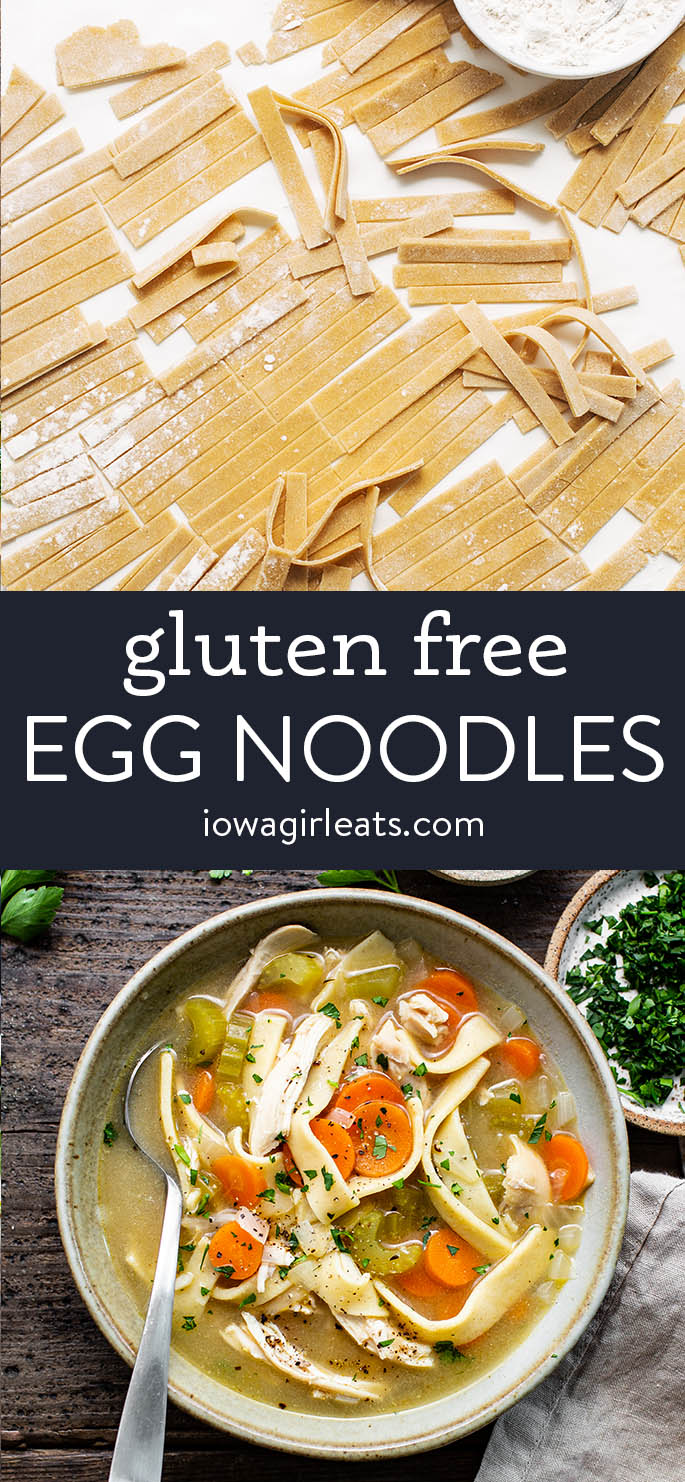
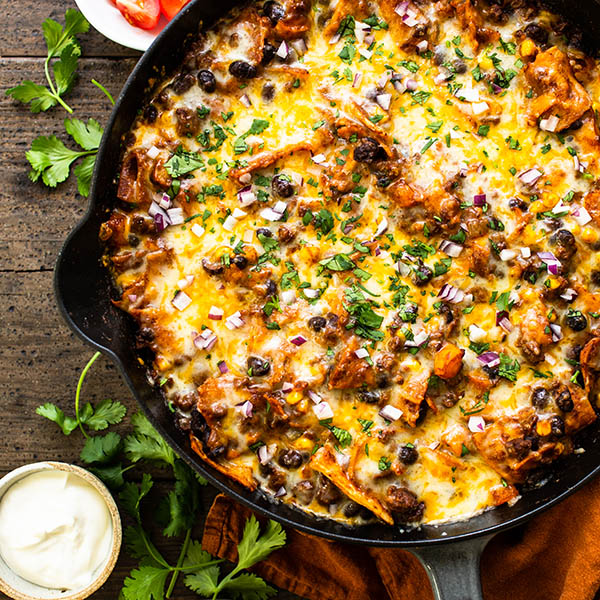


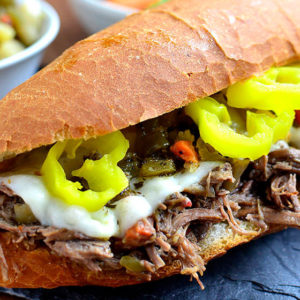
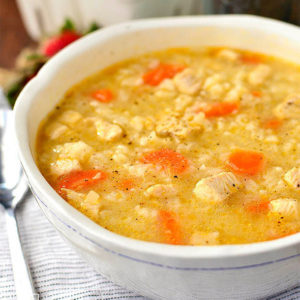
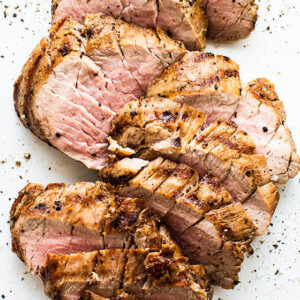
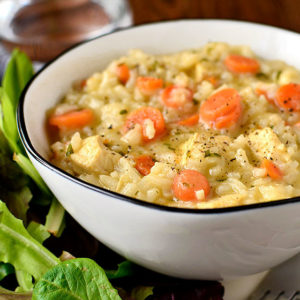
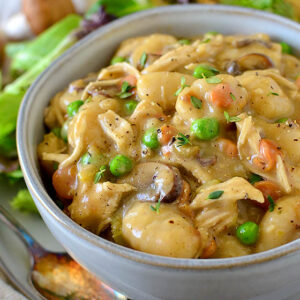

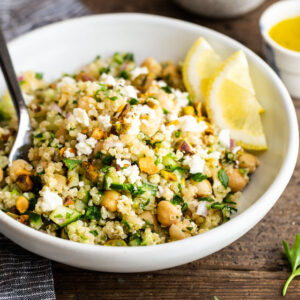
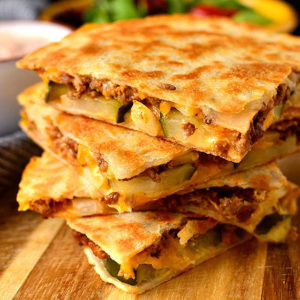
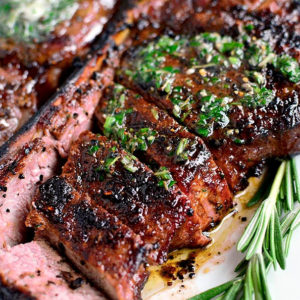
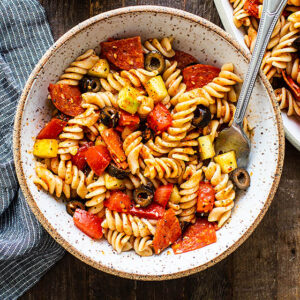


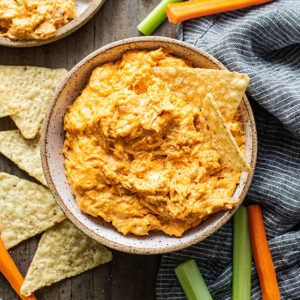
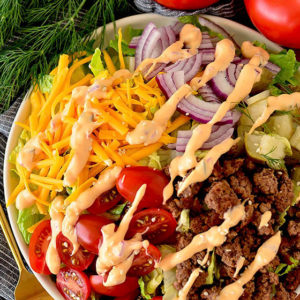

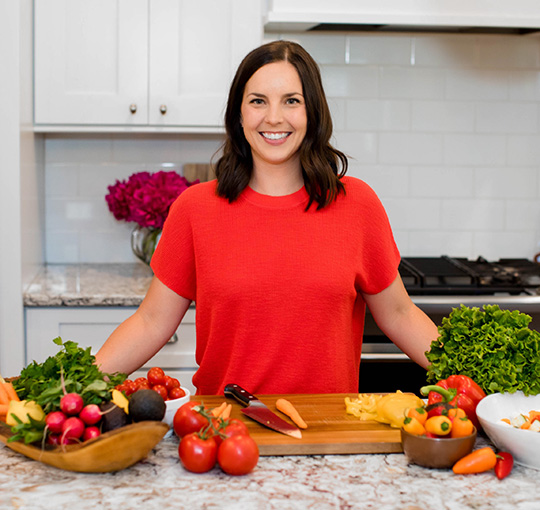
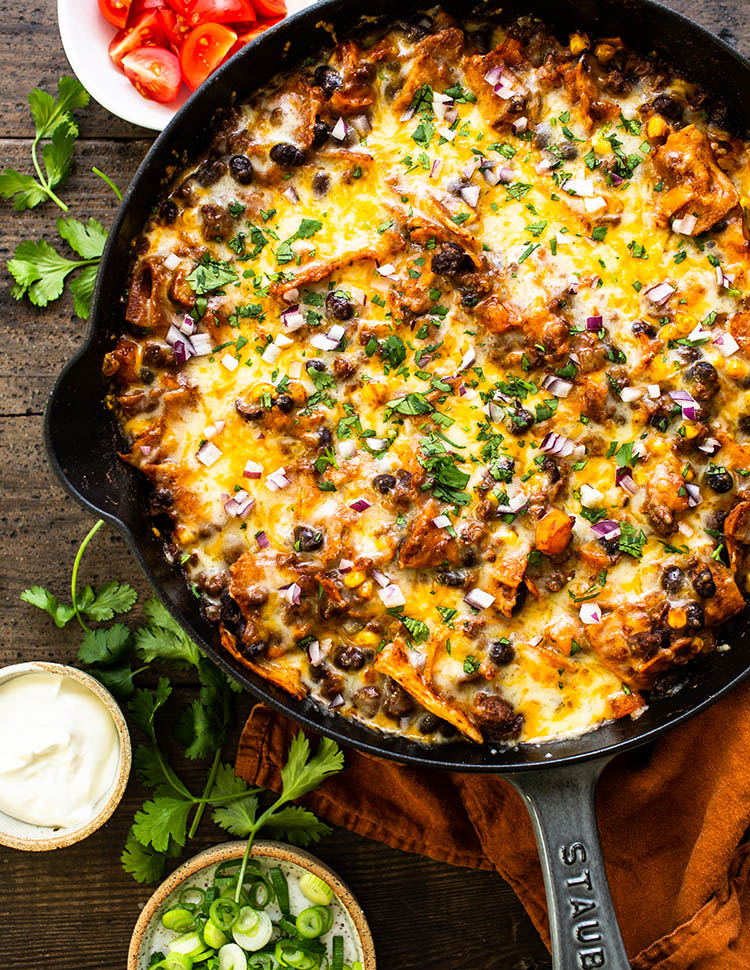
Loved the recipe. I had been looking for a recipe for egg noodles. This one worked excellently well. Thanks!!!
Awesome!! Glad it hit the spot. Thank you so much for your feedback and recipe rating!
Hello,
Do you think these noodles would work for ravioli?
Hi Hannah! I haven’t tried, but it could work!
I am hoping this will be a good substitute from my much-missed Reames.
It’s been that for us!
Do I dry them like I did with regular noodles?
You use them fresh, or you can freeze them!
Thank you so much for the detailed instructions, the common pantry ingredients, helpful photos & the subtle encouragement.
This was my first time making noodles and your chicken noodle soup; my husband is thrilled.
Definitely adding these recipes to the rotation.
I’m so glad to hear that, Diane! Thank you so much for your feedback!
Best noodle recipe ever. Even my wheatie family loves them. The home made chicken noodle soup is their favorite meal. I almost got my entire family off wheat. Bread is their downfall.
Yessss – so glad this recipe is a hit with your family, Karen! Thank you so much for sharing!
I’m always looking out for gluten-free alternatives, and your gluten-free egg noodles recipe looks amazing! It is like a game changer for those of us who are gluten sensitive. Can’t wait to make this.
I totally agree – it IS a game changer. These really taste like regular egg noodles!
I’ve enjoyed your recipes in the past that I found on your site.
I’m so glad to hear that, Donna! I hope this recipe is just as big of a hit!